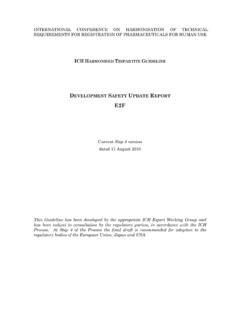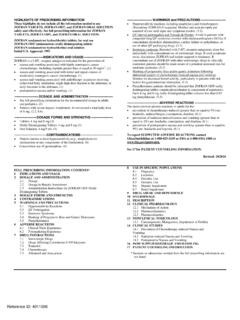Transcription of ICH E14/S7B Implementation Working Group: Clinical and ...
1 International Council for Harmonisation of Technical Requirements for Pharmaceuticals for Human Use ICH, Route de Pr -Bois 20, Box 1894, 1215 Geneva, Switzerland Telephone: +41 (22) 710 7480 - ICH E14/S7B Implementation Working Group: Clinical and Nonclinical Evaluation of QT/QTc interval prolongation and proarrhythmic potential Questions and Answers Draft version Endorsed 27 August 2020 Note: This document for public consultation comprises of: Revisions proposed to sections and of the current Q&As for ICH E14. Other sections are not proposed for revision. Subsequently, at Step 4, the revised sections and will be integrated with the other current Q&As for ICH E14; New Q&As for ICH S7B. Dated: 27 August 2020 E14/S7B Q&As 2 In order to facilitate the Implementation of the E14 and S7B Guidelines, the ICH Experts have developed a series of Q&As: E14/S7B Q&As Document History Code History Date E14/S7B Q&As Endorsement by the ICH Assembly under Step 2a and endorsement by the ICH Regulatory Members of the Assembly under Step 2b and release for public consultation (document dated 15 June 2020).
2 27 August 2020 References ICH E14 The Clinical Evaluation of QT/QTc interval prolongation and proarrhythmic potential for Non-Antiarrhythmic Drugs May 2005 ICH E14 Questions & Answers (R3) Dec 2015 ICH S7B Nonclinical Evaluation of the potential for Delayed Ventricular Repolarization (QT interval prolongation ) by Human Pharmaceuticals May 2005 Legal notice: This document is protected by copyright and may, with the exception of the ICH logo, be used, reproduced, incorporated into other works, adapted, modified, translated or distributed under a public license provided that ICH's copyright in the document is acknowledged at all times. In case of any adaption, modification or translation of the document, reasonable steps must be taken to clearly label, demarcate or otherwise identify that changes were made to or based on the original document.
3 Any impression that the adaption, modification or translation of the original document is endorsed or sponsored by the ICH must be avoided. The document is provided "as is" without warranty of any kind. In no event shall the ICH or the authors of the original document be liable for any claim, damages or other liability arising from the use of the document. Dated: 27 August 2020 E14/S7B Q&As 3 The above-mentioned permissions do not apply to content supplied by third parties. Therefore, for documents where the copyright vests in a third party, permission for reproduction must be obtained from this copyright holder. Dated: 27 August 2020 E14/S7B Q&As 4 Table of Content Revised E14 Q&As 5. Use of Concentration Response Modeling of QTc Data .. 5 6. Special Cases .. 8 New S7B Q&As 1. Integrated Risk Assessment .. 10 2. Best Practice Considerations for In vitro Studies.
4 13 3. Best Practice Considerations for the In vivo QT Studies .. 18 4. Principles of Proarrhythmia Models .. 21 Dated: 27 August 2020 E14/S7B Q&As 5 Revised E14 Q&As 1 # Date of Approval Questions Answers The ICH E14 Guideline states (in Section , page 10) that analysis of the relationship between drug concentration and QT/QTc interval changes is under active investigation. Has this investigation yielded a reasonable approach to concentration-response modeling during drug development? How can assessment of the concentration-response relationship guide the interpretation of QTc data? Concentration-response analysis, in which all relevant data across all doses are used to characterize the potential for a drug to influence QTc, can serve as an alternative to the by-time-point analysis or intersection-union test as the primary basis for decisions to classify the risk of a drug.
5 In either case, this result is an important component of the totality of evidence assessment of the risk of QT prolongation . The overall assessment of risk of QT prolongation includes nonclinical data, the time course of QT prolongation , the magnitude of QT prolongation , categorical analyses of outliers, and certain adverse events in patients that can signal potential proarrhythmic effects. There are many different types of models for the analysis of concentration-response data, including descriptive pharmacodynamic (PD) models ( , linear or Emax models), or empirical models that link pharmacokinetic (PK) models (dose-concentration-response) with PD models. It is recognized that concentration-response analyses of the same data using models with different underlying assumptions can generate discordant results.
6 Therefore, it is important that the modeling methods and assumptions, criteria for model selection, rationale for model components, and potential for pooling of data across studies be specified prior to analysis to limit bias. Prospective specification of model characteristics ( , structural model, objective criteria, goodness of fit) based on knowledge of the pharmacology is recommended whenever possible. On occasion, the QT effect is not a direct function of plasma concentration. For example, drugs that cause QT prolongation as a result of changes in protein synthesis or trafficking or drugs with accumulation into myocardial tissues might demonstrate hysteresis. Testing for model assumptions, hysteresis (a plot of data by-time point and a hysteresis loop plot), and goodness of fit should be documented.
7 Concentration-response analysis can be challenging when more than one molecular entity-multiple drugs or parent plus metabolites-contributes to the QTc effect. Important considerations 5. Use of Concentration Response Modeling of QTc Data Dated: 27 August 2020 E14/S7B Q&As 6 Concentration-response data need not come from a dedicated QT study, nor even a single study, but there are several new and important considerations. 1. Data can be acquired from first-in-human studies, multiple-ascending dose studies, or other studies provided that the concentrations achieved are well above the exposure at the maximum therapeutic dose at steady-state, and reflect high exposure scenario situations such as drug-drug and drug-food interactions, organ dysfunction, and/or genetically impaired metabolism. 2. Efficient concentration-response analysis using data acquired in studies with other purposes requires as much quality control as is needed for a dedicated study.
8 This includes robust, high-quality electrocardiogram (ECG) recording and analysis sufficient to support a valid assay for ECG intervals (see ICH E14 and Q&A 1). 3. If there is an intention to pool data from multiple studies, it is important to test for heterogeneity. Pooling of studies that were not planned for this purpose can produce bias. This potential should be critically discussed in the analysis plan. 4. A separate positive control would not be necessary if either of the following conditions is met: a) There are data characterizing the response at a sufficiently high multiple of the clinically relevant exposure (see ICH E14 Section ); or b) If the maximum therapeutic exposure has been fully covered in the Clinical ECG assessment ( , concentrations representative of the maximum recommended dose at steady-state in situations of intrinsic and/or extrinsic factors that increase bioavailability), but sufficiently high multiples cannot be obtained ( , for reasons of safety, tolerability, saturating absorption), then a nonclinical integrated risk assessment that includes the hERG assay, an in vivo QT assay, and any follow up studies can be used as supplementary evidence.
9 See ICH S7B Q&A for details; in summary, the nonclinical studies should include (1) a hERG safety margin higher than the safety margins computed under the same experimental protocol for a series of drugs known to cause torsade de pointes (TdP) and (2) no QTc prolongation in an in Dated: 27 August 2020 E14/S7B Q&As 7 vivo assay of sufficient sensitivity conducted at exposures of parent compound and human-specific major metabolites that exceed Clinical exposures. Decision-making Both the intersection-union test and the concentration-response analysis can estimate the maximum effect of a drug treatment on the QTc interval , but they are not used to test the same hypothesis. As mentioned above, inspection of the time course of QT prolongation is important. However, hypothesis testing based on a by-time point analysis (intersection-union test or point estimate and confidence intervals) is inappropriate in studies designed for a concentration-response analysis, if not powered to assess the magnitude of QT prolongation for each time point.
10 When using a concentration-response analysis as the primary basis for decisions to classify the risk of a drug, the upper bound of the two-sided 90% confidence interval for the QTc effect of a drug treatment as estimated by exposure-response analysis should be <10 ms at the highest clinically relevant exposure to conclude that an expanded ECG safety evaluation during later stages of drug development is not needed. (See ICH E14, Section and Q&A 7). Other uses In addition to serving as the basis for regulatory decision-making, concentration-response analysis has established its utility in several settings enumerated below. Providing insight into regimens not studied directly An understanding of the concentration-response relationship can help predict the QT effects of doses, dosing regimens, routes of administration, or formulations that were not studied directly.
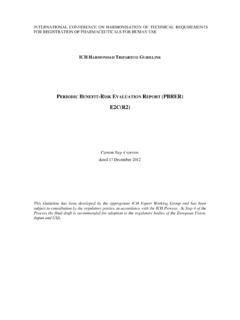
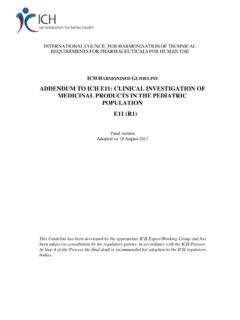
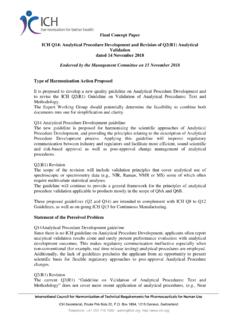
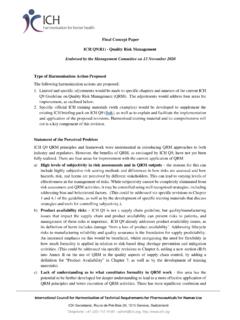
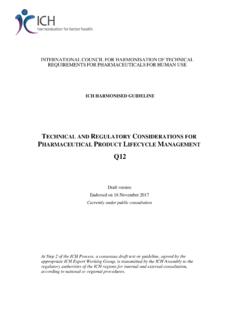
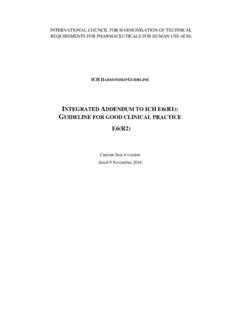
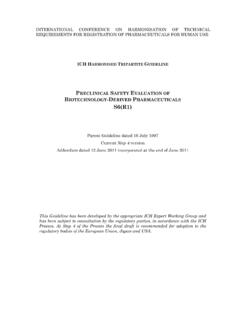
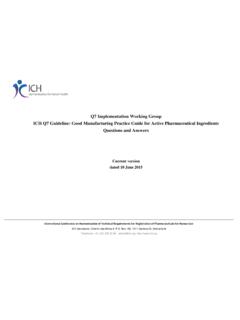
![[ICH E2F] [EXAMPLE DSUR – PHASE III INVESTIGATIONAL …](/cache/preview/e/7/a/2/e/6/3/0/thumb-e7a2e63043c4463724e748eb98faa3a7.jpg)
